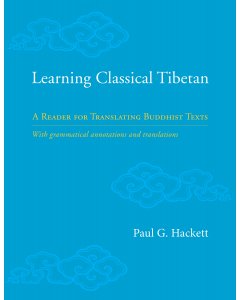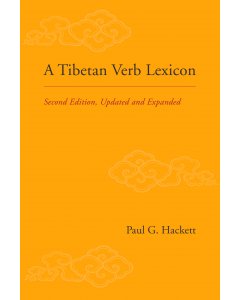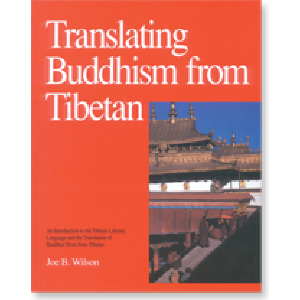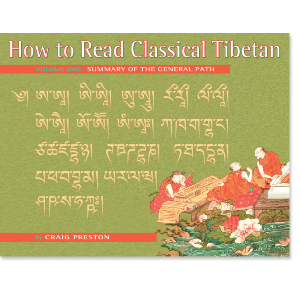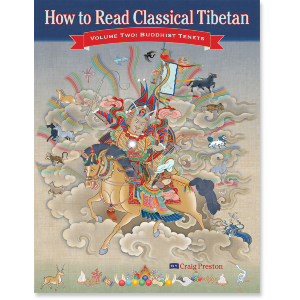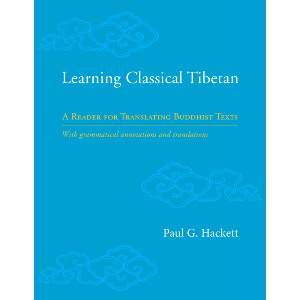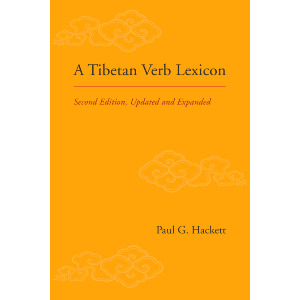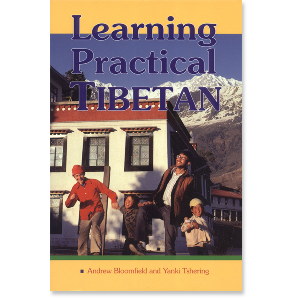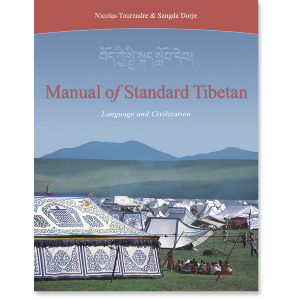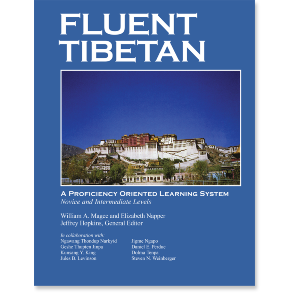Interested in learning Tibetan or deepening your existing Tibetan language skills? Below is a guide to help you choose the right resources for your needs. We offer two tracks: one for those who plan on traveling or spending a longer period of time in India, Nepal, Bhutan, China, and Tibet; and another for those who are focused on classical written Tibetan for academic or practice purposes.


Paul G. Hackett
Paul Hackett specializes in canonical Buddhist philosophy and Tibetan culture, as well as their influence on contemporary alternative religion in America. He is also active in the field of applied computational linguistics and serves as the chair of the Tibetan Information Technology Panel for the International Association for Tibetan Studies. He previously taught Classical Tibetan language at Columbia and Yale universities.
Paul G. Hackett
GUIDES
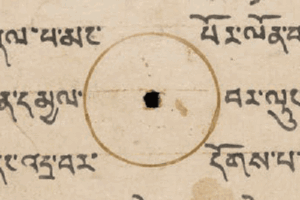
Tibetan Language Reader's Guide

Reading or Translating Classical Tibetan
The following materials are geared for those wanting in-depth study of the written language of Tibet, including the classical and literary. These were all designed to work together and complement each other, though can be used stand-alone as well. For spoken/colloquial Tibetan, skip to that section below.
Translating Buddhism from Tibetan
This book is the foundation for the books that follow. It's a complete textbook on classical Tibetan suitable for beginning or intermediate students. Based on the system developed by Jeffrey Hopkins at the University of Virginia, it presents—in lessons with drills and reading exercises—a practical introduction to Tibetan grammar, syntax, and technical vocabulary used in Buddhist works on philosophy and meditation. A well-designed learning system, it serves as an introduction to reading and translating Tibetan as well as to Buddhist philosophy and meditation. Each chapter contains a vocabulary of helpful Buddhist terms. Students with prior experience will find that the seven appendices—which review the rules of pronunciation, grammar, and syntax—are an indispensable reference.
How to Read Classical Tibetan, Volume One
Craig Preston, the author, recommends that people study Translating Buddhism from Tibetan as a preliminary to using this book. This is a complete language course built around the exposition of a famous Tibetan text, Summary of the General Path to Buddhahood, written at the beginning of the fifteenth century. All the language tools you need to work at your own pace are here in one place. You won't need a dictionary because all the words and particles are translated and explained in each occurrence, and there is a complete glossary at the end of the book. Every sentence is diagrammed and completely explained so that you can easily see how the words and particles are arranged to convey meaning. Because everything is explained in every sentence, you will learn to recognize the recurrent patterns, which makes the transition from learning words to reading sentences easier than it would be otherwise. As you study How to Read Classical Tibetan, you will learn to recognize the syntactic relationships you encounter, understand the meaning signified, and translate that meaning correctly into English.
How to Read Classical Tibetan, Volume Two
A follow-up to Volume One, this book assumes the reader is familiar with both the previous volume and Translating Buddhism from Tibetan.
Learning Classical Tibetan: A Reader for Translating Buddhist Texts
Designed for both classroom use and independent study, Learning Classical Tibetan is a modern and accessible reader for studying traditional Buddhist texts. Unlike other readers of Classical Tibetan, this is a comprehensive manual for navigating Tibetan Buddhist literature drawing on a monastic curriculum. Utilizing the most up-to-date teaching methods and tools for Tibetan language training, students learn to navigate the grammar, vocabulary, syntax, and style of Classical Tibetan while also engaging the content of Buddhist philosophical works.
Chapters consist of a contextual introduction to each reading, a Tibetan text marked with references to annotations that provide progressive explanations of grammar, cultural notes on vocabulary, translation hints, notes on the Sanskrit origins of Tibetan expressions and grammatical structures, as well as a literal translation of the text. The reader also includes study plans for classroom use, discussion of dictionaries and other helpful resources, a glossary of English grammatical and linguistic terms, and much more.
This reader can be used in conjunction with Paul Hackett’s expanded edition of his well-known Tibetan Verb Lexicon. Using a clear and approachable style, Hackett provides a practical and complete manual that will surely benefit all students of Classical Tibetan.
A Tibetan Verb Lexicon
This is the second and much-expanded edition of this essential resource for those studying or translating Tibetan. edition . With over 4,500 entries of the most frequently used Tibetan verbs, this new edition of Hackett’s highly acclaimed Tibetan Verb Lexicon is an incomparable lexical resource. This comprehensive verb dictionary includes various verb forms, verbal collocations, auxiliary constructions together with grammatical information, Sanskrit equivalents, and example sentences, making it a vital tool for any translator, writer, or scholar who intends to maximize the quality of their work related to the Tibetan language.
Much more than a mere translation of existing works, this lexicon was compiled employing statistical techniques and data and draws on sources spanning the 1,200 years of Tibet's classical literature, covering all major lineages. The 4,500 root verb forms and phrasal verb subentries incorporates a wide range of information not previously available in dictionary form. The individual entries are in Tibetan script and contain English meanings, Sanskrit equivalents, complete sentences drawn from the corpus of Tibetan classical literature, and related sentence structure information. An extensive introduction to contemporary linguistic theory as applied to Tibetan verbs provides the theoretical underpinnings of the lexicon. Paul Hackett, the author, strongly encourages readers to become familiar with Translating Buddhism from Tibetan before approaching this book.
Spoken and Written Modern Tibetan
Below you will see our resources if you with to speak and read modern, colloquial Tibetan.
Learning Practical Tibetan
This book, for the casual traveler and aspiring student, offers a great overview, packed with practical examples for the casual student. It gives the basics of grammar and phonetics and offers practical sample dialogues. And it is small enough that you could easily take it with you on your adventure! It starts off with some basic grammar and vocabulary and then moves into dialogues for eating, shopping, visiting monasteries, transportation, and more.
Manual of Standard Tibetan
In this comprehensive treatment of modern Tibetan, you'll learn about the everyday speech of Lhasa as it is currently used in Tibet and in the Tibetan diaspora. It not only places the language in its natural context but also highlights key aspects of Tibetan civilization and Vajrayana Buddhism. The manual, which consists of forty-one lessons, includes many drawings and photographs as well as two political and linguistic maps of Tibet. You'll find the appendices especially helpful as they outline the differences between written literary and spoken Tibetan; detail pronunciation; and explain the use of honorific words, compound terms, and transfers from other languages. Two CDs provide an essential aural complement to the manual, making it a very practical guide for more serious students.
Fluent Tibetan
This book is a fully comprehensive course in spoken Tibetan which has MP3 files to support a real immersion experience. The most systematic and extensive course system now available for spoken Tibetan, Fluent Tibetan was developed by language experts working in conjunction with indigenous speakers at the University of Virginia. Based on government-approved courses for diplomats needing to learn a language quickly, the method acquaints students with the sounds and patterns of Tibetan speech through repetitive interactive drills, enabling the quick mastery of increasingly complex structures and thereby promoting rapid progress in speaking the language.
$150.00 - Hardcover

